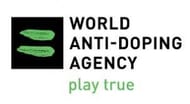In 1988, when Ben Johnson was convicted of using anabolic steroids, The New York Times quoted a Soviet coach’s remark, “I feel sorry for Ben Johnson. All sportsmen, not all, but maybe 90%, including our own, use drugs.”
Thus the history of the use of performance enhancing drugs, and the frequency of use over the years, might be a matter of surprise for many.
Sports is no different from warfare or business, and thus, the ideals of “fairness” and “equality” which sports have been associated with, might just seem too utopian if we were to truly understand the gruesome truth and the ferociousness of competition at the global level, and the amount of physical and mental preparedness required to sustain the immense pressure of competition and training.
In 1933 Dr. Otto Rieser, in his prophetic work ‘Doping and Doping Substances’ states,
“The use of artificial means [to improve performance] has long been considered wholly incompatible with the spirit of sport and has therefore been condemned. Nevertheless, we all know that this rule is continually being broken, and that sportive competitions are often more a matter of doping than of training.”
Although it was in 1933 that Otto Rieser made this statement, the use of performance-enhancing drugs has always had a latent function in sports since its very inception.
The early stages
“The Greek physician, Galen, is reputed to have prescribed ‘the rear hooves of an Abyssinian ass, ground up, boiled in oil, and flavoured with rose hips and rose petals’ to improve performance.” – (U.S.A Olympic Committee,1995)
Ancient Olympic athletes attempted to spike testosterone levels (the hormone that anabolic steroids are designed to produce) by eating sheep testicles, a prime source for testosterone. In the Roman era, horses were fed various substances to increase speed and endurance, and the gladiators were administered unspecified stimulants to overcome fatigue and injury (Wadler & Hainline, 1989) to make their fights more intense. Besides using strychnine, a stimulant still used in the 20th century, the athletes of yore also used hashish, cola plants, cactus-based stimulants and fungi, with varying success.
Many speculate that the annulment of the ancient Olympic Games could also be attributed to extravagant use of drugs, particularly pharmacological agents such as extracts of mushrooms and plant seeds.
The use of stimulants also dates back to the Greeks who drank various brandy and wine concoctions (Voy, 1991) and ate hallucinogenic mushrooms and sesame seeds to enhance performance.
The ancient Norse warriors were also among the early users of hallucinogenic mushrooms, meant to increase their fighting strength ‘twelve-fold’. (Prokop, 1970: 45).
With advent of the Christian era, the popularity of the games dwindled, and it was finally abolished in 393 A.D by Emperor Theodosius.
Modern sports and doping
It was in the middle of the 19th century that sports encountered a period of revival, and it gradually transformed from a means of recreation and entertainment into a business phenomenon.
The first documented case of doping was in 1865, when Dutch swimmers were convicted of using stimulants. Not long afterwards, in the late 19th century, European cyclists were caught using a multitude of drugs – from caffeine to ether-coated sugar cubes to Vin Mariani, a widely used mixture of coca leaf extract and wine, in order to alleviate pain and exhaustion. In 1886, a Dutch cyclist died from an overdose of cocaine and heroin, and in 1896, a Welsh cyclist, Arthur Linton, died after taking strychnine (the same substance used by the ancient Romans).
It was later in 1896, with the rebirth of the Olympic Games, that a wider number of drugs gained popularity in their use and availability such as codeine and strychnine.
One of the earliest accounts of doping was that of Thomas Hicks in the third Olympic Games in St. Louis in 1904. During the race, Hick was given multiple doses of brandy laced with strychnine. After he collapsed upon crossing the finish line, it took four doctors to revive him sufficiently to rush him to the hospital. Nevertheless, he was able to keep his gold medal.
Later, in the early period of the 20th century, there seems to be a stark decline in the number of cases of doping, even in the absence of bans or doping tests. This was mainly because of the widespread awareness about the lethal effects of drugs, and the reported deaths. This in turn, would caution many athletes about the dire effects of these drugs. Only special potions, tinctures, lotions and herbal extracts were utilized in this period, with minimum causalities.
The emergence of anabolic steroids
By the 1930s, Nazi doctors had created anabolic steroids such as testosterone that could be administered through a syringe. Thus, in the 1936 Olympics in Berlin, Germany won the overall medal count with 89 medals, and the United States came in second with 56 medals.
After World War II, political conditions greatly affected athletic developments. The USSR, with the aid of captured German doctors, developed new anabolic steroids, and worked to exert their political prowess through athletic performances. It was now not merely a matter of individuals competing against each other for medals; instead, the political strife came to be reflected in these games. In their first appearance in the 1952 Summer Olympics in Helsinki, Finland, USSR procured 71 medals.
The USA and the USSR not only led the armament race, but also the development of new potent anabolic steroids, with better advanced facilities, and a large group of chemists and physicians. From the 1960s onwards, the use of drugs was evident in every sport, from football to weightlifting and track & field, and the direct result was a sharp increase in performance.
By the mid-1960s most of the top-ranking throwers began using anabolic steroids, including Randy Matson, the 1968 Olympic champion and world-record holder in shot put.
Cycling was undoubtedly the crucial area which saw an explosion of drug usage. Ludwig Prokop (1970: 46) describes cycling competitions of that era as ‘special hotbeds of doping’.
In the 1960 Rome Olympic Games, Knud Jensen, a 23-year-old Danish cyclist, collapsed during competition and died, and later in the 1967 Tour de France, English cyclist Tom Simpson, 29, met with a similar fate.
After the reunification of Germany in 1990, Professor Werner Franke and Brigitte Berendonk’s revelation about the East German Stasi program shocked the world:
“Top-secret doctoral theses, scientific reports, progress reports of grants, proceedings of symposiums of experts, and reports of physicians and scientists who served as unofficial collaborators for the Ministry of State Security (‘Stasi’) reveal that from 1966 on, hundreds of physicians and scientists, including top-ranking professors, performed doping research and administered prescription drugs as well as unapproved experimental drug preparations. Several thousand athletes were treated with androgens every year, including minors of each sex. Special emphasis was placed on administering androgens to women and adolescent girls because the practice proved to be particularly effective for sport performance.
“This Communist state-sponsored program was not only a highly organized assault on the rules of sport; more importantly, it also violated scientific and medical ethics. Girls and boys 14 years of age or younger were given anabolic steroids and other drugs – and often neither they nor their parents were informed.”
Following this incident, such national programs were also found to have been prevalent in the Soviet Union and Soviet bloc countries.
Similarly, the Chinese established the National Research Institute, a high performance sport science laboratory quite similar to the GDR’s Research Institute for Physical Culture and Sports in Leipzig (Hoberman & Todd, 1992).
The usage of drugs to enhance performance had infiltrated every sport by now, through such programs.
Anti-doping over the years
The International Amateur Athletic Federation (IAAF) in 1928 was the first to implement anti-doping measures by banning the use of stimulating substances. Many other international federations followed along the same lines, but failed to be effective due to the lack of tests.
The death of Danish cyclist Knud Enemark Jensen during competition at the Olympic Games in Rome 1960 (the autopsy revealed traces of amphetamine) paved the way for stricter anti-doping policies.
In 1966 the UCI (cycling) and FIFA (football) were among the first international federations to introduce doping tests in their respective World Championships. In the next year the International Olympic Committee (IOC) instituted its Medical Commission, which released a list of prohibited substances. Drug tests were first introduced at the Olympic Winter Games in Grenoble and at the Olympic Games in Mexico in 1968.
By the 1990s, there was an unmistakable relation between the more effective tests and the sharp decline in the performance of athletes.
The World Anti-Doping Agency (WADA), a private non-governmental organization, was established on November 10, 1999 to formulate and implement anti-doping devices across countries and across sports.
Following the establishment of WADA, one of the most famous doping scandals was that of Bay Area Laboratory Co-Operative, or BALCO, founded by Victor Conte. He created designer steroids which were undetectable by the drug tests prevalent in those times. This revelation led to the prosecution of athletes including Olympians such as Tim Montgomery (the world record holder in the 100m sprint at the time) and Marion Jones, football players such as Bill Romanowski, and baseball stars such as Barry Bonds, Jason Giambi and Gary Sheffield, all of whom were found related to BALCO.
Conclusion
Though the doping-tests are far more advanced today, it would be naive to believe that drug usage among athletes is completely absent. Performance enhancers will always be perceived as the trump card which enables the sportsperson to cement a place in the global competitive sphere. Numerous athletes still continue to fail doping tests, thus validating the fact that this old enemy which has always threatened the “integrity of sports”, is an inevitable force governing modern sports.


